Introduction
CEOs and founders of startups and scaleups face constant pressure to optimize resources and drive growth. Among these challenges, one crucial element often makes or breaks a company’s trajectory: hiring the right talent for each role. Many organizations miss the mark by filling high-stakes roles with underqualified talent or conversely, overpaying senior executives to perform routine tasks. These mismatches can lead to inefficiency, misalignment with strategic goals, and ultimately, financial strain. This white paper explores why hiring the right talent for each role, from junior to executive, is critical for sustainable growth, operational efficiency, and cost-effectiveness.The Cost of Misaligned Talent: Research Insights
1. Underqualified Talent in High-Stakes Roles
- Impact of Junior Employees in Executive Roles: Placing a junior employee, such as a bookkeeper or junior accountant, in a strategic role like CFO or Director of Finance is a common cost-saving approach. However, research shows this can be counterproductive. A study by Harvard Business Review found that mismatched hires in senior positions often lack the skills to anticipate financial risks, navigate regulatory complexities, and implement long-term financial strategies. These gaps can expose companies to operational risks, inefficiencies, and costly mistakes.
- Reduced Efficiency: Junior-level employees may also lack the decision-making skills and high-level insights required for executive roles. Consequently, CEOs and founders may find themselves micromanaging or correcting errors, which diverts time away from strategic focus. Misaligned talent requires costly oversight and can stall the organization’s momentum.
2. Overpaying Senior Talent for Routine Tasks
- Financial Impact of Misusing Senior Talent: Conversely, using a senior executive, like a CFO, to perform routine tasks such as bookkeeping or basic reporting is a costly misallocation of resources. A Deloitte study highlights that senior executives who regularly engage in junior-level work can decrease the company’s profitability, as their time could be better spent on high-value tasks such as strategic planning, investor relations, and competitive analysis. The loss of strategic input from overqualified executives translates to missed opportunities and reduced overall impact.
- Executive Burnout and Job Dissatisfaction: Research published by Gallup also suggests that high-caliber professionals who find themselves consistently engaged in non-strategic tasks report lower job satisfaction and are more likely to seek other opportunities. Retaining senior talent becomes harder, driving up the cost of recruitment and onboarding, while hindering the company’s long-term stability.
The Strategic Case for Role Alignment
1. Enhanced Efficiency and Cost Optimization
- Right-Sized Talent, Right-Sized Costs: When companies hire the right talent level for each role, they optimize their labor costs by aligning salary with role complexity. According to PwC’s Human Capital Effectiveness Report, aligning job responsibilities with talent level leads to 20% higher productivity, as employees feel empowered to perform tasks at their skill level without constant oversight.
- Improved Financial Health: Role alignment helps companies balance salaries with the actual value brought to the organization. For example, hiring a CFO for strategic oversight and a junior accountant for day-to-day tasks allows each employee to focus on what they do best, leading to better financial outcomes and lower total labor costs.
2. Increased Strategic Capacity and Growth Potential
- Leveraging Executive Talent for Strategic Initiatives: A well-aligned team means that senior talent, like a CFO, can focus on growth-driving activities such as fundraising, acquisitions, and financial forecasting, rather than routine bookkeeping. This provides CEOs and founders with high-level insights that can shape long-term strategy and improve investor confidence.
- More Agile Decision-Making: Research from McKinsey highlights that companies with clear role alignment make decisions 30% faster and with greater accuracy, as executives are not bogged down with tasks outside their scope. This agility is essential for scaling businesses looking to respond quickly to market changes.
Key Strategies for CEOs and Founders to Hire the Right Talent
- Define Clear Role Requirements:
- Outline specific responsibilities for each role and ensure there’s a strong alignment between skills required and role expectations. Avoid the temptation to merge vastly different responsibilities into one position, such as expecting a bookkeeper to handle financial strategy.
- Conduct Cost-Benefit Analyses:
- Calculate the potential return on investment (ROI) for each role. For example, compare the cost of hiring a junior accountant versus a CFO, and ensure the responsibilities justify the level of seniority and salary attached to the role.
- Invest in Scalable Talent Solutions:
- Consider fractional or part-time executive roles as a cost-effective solution for startups or small businesses that may not require a full-time CFO. Fractional CFOs can provide high-level insights without the full cost of a permanent hire.
- Emphasize Skills Development and Succession Planning:
- Encourage professional growth by providing junior staff with mentorship from senior executives, positioning them for future advancement while keeping the integrity of current role requirements intact.
Real-World Examples and Business Cases
- Zynga’s CFO Misalignment:
- Overview: Zynga, an early-stage SaaS-based gaming company, faced challenges by bringing on senior executives who were overqualified for certain operational roles, creating inefficiencies and high costs.
- Impact: This misalignment led to financial reporting issues, investor confidence decline, and ultimately, high turnover in leadership positions.
- Lesson: Zynga’s case highlights the risks of hiring high-level talent without a defined strategic role, resulting in resource waste and operational strain. This case is widely referenced in discussions of role alignment in high-growth companies.
- HubSpot’s Deliberate Talent Strategy for Scaling:
- Overview: HubSpot, a SaaS company specializing in inbound marketing, emphasized hiring the right talent at the right time, particularly for executive roles.
- Impact: Instead of filling top roles with junior talent, HubSpot strategically scaled by introducing fractional executives and mid-level managers who could grow with the company. This approach allowed HubSpot to meet operational demands while controlling costs.
- Lesson: This case underscores the importance of flexible hiring structures (like fractional roles) that can scale with the business while ensuring critical strategic roles are adequately filled.
- Box’s Transition to Enterprise Sales and Leadership Realignment:
- Overview: Box, a SaaS cloud storage company, had to realign its talent as it transitioned from targeting small businesses to larger enterprises.
- Impact: Hiring experienced executives specifically for enterprise sales strategy allowed Box to capitalize on high-value clients, though it initially required a restructuring. In Box’s early stages, leadership gaps in this area created inefficiencies and lost opportunities.
- Lesson: This example illustrates the value of hiring experienced talent for market-specific strategy as a company scales. Filling these roles with junior talent in enterprise contexts proved challenging until seasoned leaders were brought on board.
- Stripe’s Structured Talent Approach in Scaling:
- Overview: Stripe’s founders initially used a lean model but focused on hiring experienced talent for critical financial roles, understanding that early misalignments could stall growth.
- Impact: By investing early in financial oversight and strategic executive roles, Stripe maintained controlled, high-velocity growth and managed risks that are common in high-growth fintech SaaS environments.
- Lesson: Stripe’s structured approach emphasizes the importance of experienced leadership in early financial roles, especially in regulated industries where compliance and investor confidence are critical.
- Gusto’s Role Adjustments and the Importance of Strategic Hires:
- Overview: Gusto, a SaaS platform for payroll and benefits, initially struggled by having junior talent handle high-stakes strategic roles.
- Impact: As it grew, Gusto realized the importance of bringing in executives for financial strategy and scaling operations. The addition of CFO and COO roles improved investor relations and helped Gusto manage regulatory challenges more effectively.
- Lesson: Gusto’s pivot to hiring experienced executives demonstrates the importance of role alignment as a company scales and the benefits of strategic hires in operationally complex roles.
Conclusion: The Cost and Value of Strategic Talent Alignment
Hiring the right talent is more than a matter of job titles; it’s a strategic decision that impacts the financial health, growth potential, and operational efficiency of a business. CEOs and founders who invest in the right talent for each role position their organizations to be more resilient, agile, and profitable. By avoiding the pitfalls of underqualified or misallocated talent, leaders can ensure their teams are empowered to drive sustainable growth, reduce costs, and elevate the company’s competitive position in the market. Ultimately, the right hire at every level is a powerful investment in a company’s future success. References and- https://time.com/7022677/mediocre-leadership-essay/?utm_source=chatgpt.com
- https://www2.deloitte.com/us/en/insights/focus/executive-transitions/team-performance.html
- https://www2.deloitte.com/us/en/insights/topics/leadership/employee-wellness-in-the-corporate-workplace.html
- https://www.gallup.com/workplace/285674/why-great-jobs-make-employees-happy.aspx
- https://www.mckinsey.com/capabilities/strategy-and-corporate-finance/our-insights/making-great-decisions

